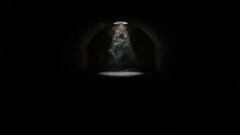Those of us who are Western Christians continue to hear reports that the church is migrating to the south and to the east–that as our nations increasingly turn their collective backs on God, God begins fresh work in other parts of the world. Says Mark Noll in his new book The New Shape of World Christianity, “It is as if the globe had been turned upside down and sideways. A few short decades ago, Christian believers were concentrated in the global north and west, but now a rapidly swelling majority lives in the global south and east. [If a Christian] Rip Van Winkle wiped a half-century of sleep from his eyes … and tried to locate his fellow Christian believers, he would find them in surprising places, expressing their faith in surprising ways, under surprising conditions, with surprising relationships to culture and politics, and raising surprising theological questions that would not have seemed possible when he fell asleep.”
Here are a few remarkable facts Noll provides:
- This past Sunday it is possible that more Christian believers attended church in China than in all of so-called “Christian Europe.” Yet in 1970 there were no legally functioning churches in all of China; only in 1971 did the communist regime allow for one Protestant and one Roman Catholic Church to hold public worship services, and this was mostly a concession to visiting Europeans and African students from Tanzania and Zambia.
- This past Sunday more Anglicans attended church in each of Kenya, South Africa, Tanzania and Uganda than did Anglicans in Britain and Canada and Episcopalians in the United States combined–and the number of Anglicans in church in Nigeria was several times the number in those other African countries.
- This past Sunday more Presbyterians were at church in Ghana than in Scotland, and more were in congregations of the Uniting Presbyterian Church of Southern Africa than in the United States.
- The past Sunday more people attended the Yoido Full Gospel Church pastored by Yongi Cho in Seoul, Korea, than attended all the churches in significant American denominations like the Christian Reformed Church, the Evangelical Covenant Church or the Presbyterian Church in America.
- This past Sunday the churches with the largest attendance in England and France had mostly black congregations. About half of the churchgoers in London were African or African-Caribbean. Today, the largest Christian congregation in Europe is in Kiev, and it is pastored by a Nigerian of Pentecostal background.
- This past week in Great Britain, at least fifteen thousand Christian foreign missionaries were hard at work evangelizing the locals. Most of these missionaries are from Africa and Asia.
- For several years the world’s largest chapter of the Jesuit order has been found in India, not in the United States, as it had been for much of the late twentieth century.
I have several books on my shelf that explore this phenomenon, showing how the center of the church is, indeed, migrating away from the West. Noll’s book, though, takes a fresh approach. Because the world is coming more and more to look like America, American Christianity is important to the world. “The point of this book,” he says, “is not primarily to shed light on the history of Christianity in North America. It is, rather, to address the question of what American Christianity means for the worldwide Christian community. … The book’s major argument is that Christianity in its American form has indeed become very important for the world. But it has become important, not primarily because of direct influence. Rather, the key is how American Christianity was itself transformed when Europeans carried their faith across the Atlantic. The American model rather than American manipulation is key.” So in this book Noll looks to the American pattern and seeks to understand how that may shed light on how the faith will spread in this new areas of the world.
What Noll does not do is blame America for the woes of the church in the south and in the east. He does not charge America with recklessness in exporting religion as she has exported culture and conflict and so much else. Instead he stresses “the advantage of seeing the new regions of recent Christian growth as following a historical path that Americans pioneered before much of the rest of the Christian world embarked on the same path.” It is an intriguing thesis and one that bears examination. Noll has to admit, though, that this book can be little more than an interim report since the situation is changing so rapidly. Yet even as an interim report there is much to glean from it.
Here is how Noll goes about this task. In the first three chapters, the first part of the book, he provides a short sketch of the Christian world today, outlines some of the challenges posed by this new reality and then describes a few developments among evangelicals of the nineteenth century that pointed toward what would happen in the world in the twentieth century. Chapters four through seven are the heart of the book and here he provides his argument that American form rather than American influence has been the foremost contribution of America to the recent world history of Christianity. In the third and final section he tests his argument against specific case studies. And, of course, he pulls everything together in a concluding chapter.
While his argument is compelling and while the book shares a great deal of interesting facts, both historical and contemporary, it is not without what I consider quite a considerable weakness. In defining what it means to be a Christian or an evangelical, terms Noll uses repeatedly, an author may face two extremes: death by a thousand qualifications or the opposite error of a lack of qualification. And in Noll’s case I think he tends toward the latter. His definition of Christian is wider than it ought to be, I think, and the same is true of evangelical. In both cases the definition could include Roman Catholics and potentially even Mormons or other groups who have no great love for the true gospel. While we cannot deny that these groups are also exporting religion to the far corners of the world, grouping them under the same banner as Protestant evangelicals obscures rather than clarifies. When we look at a church like Yongi Cho’s Full Gospel Church we are right to ask whether what is being taught there is even the gospel and, hence, whether it is truly a church at all. Rarely does Noll pause to consider if the churches he writes about are faithful to the gospel. It is as if any body calling itself a church (or perhaps calling itself evangelical) is equal. And then we wonder, is much of the new shape of world Christianity really even Christian?
The New Shape of World Christianity is an interesting read and an important one, even. As an interim report, I think it succeeds in its task of drawing attention to a reality that is only now unfolding around us. And on that basis I am glad to recommend it to those who are interested in the subject matter.










